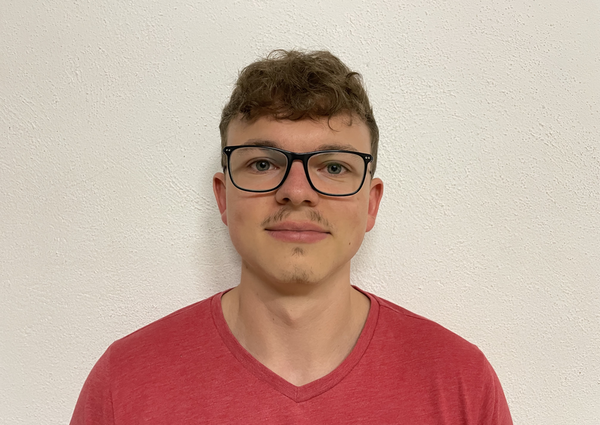Explore our research!
Compared to music that is rather a field with a quite long history, data analysis and visualization is a
very young branch in Computer Science. In this project, we want to investigate, how musicology can
profit from modern techniques. To provide useful visual analysis methods or tools for musical
applications, an in-depth knowledge of music theory and its applications is required to develop
appropriate techniques that support domain experts in their work. Providing a foundation that bridges
both fields is targeted to create new approaches that lead to the generation of more deep knowledge.
Integrating the user or domain expert holds the potential to maximize the knowledge output by combining
the computing power of nowadays technology and human's intuition, understanding and background knowledge
that can seldom completely covered by simply gathering data.
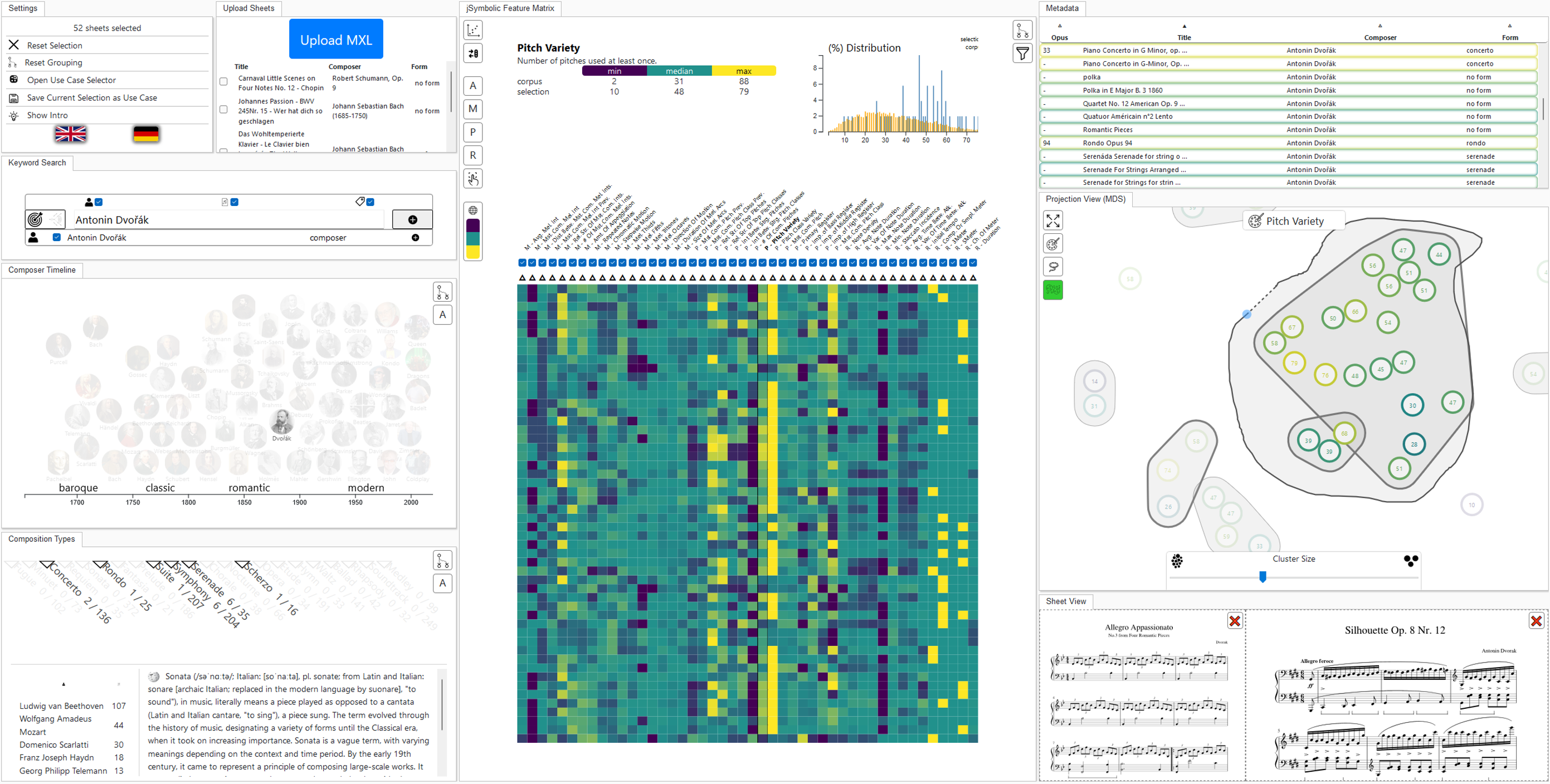
CorpusVis: Visual Analysis of Digital Sheet Music Collections
Manually investigating sheet music collections is challenging for music analysts due to the magnitude
and complexity of underlying features, structures, and contextual information.
CorpusVis is an interactive visual workspace, enables scalable and multi-faceted analysis providing access
to computational methods, generating varying perspectives on the same data.
The proposed application uses metadata including composers, type, epoch, and low-level features, such as
pitch, melody, and rhythm.
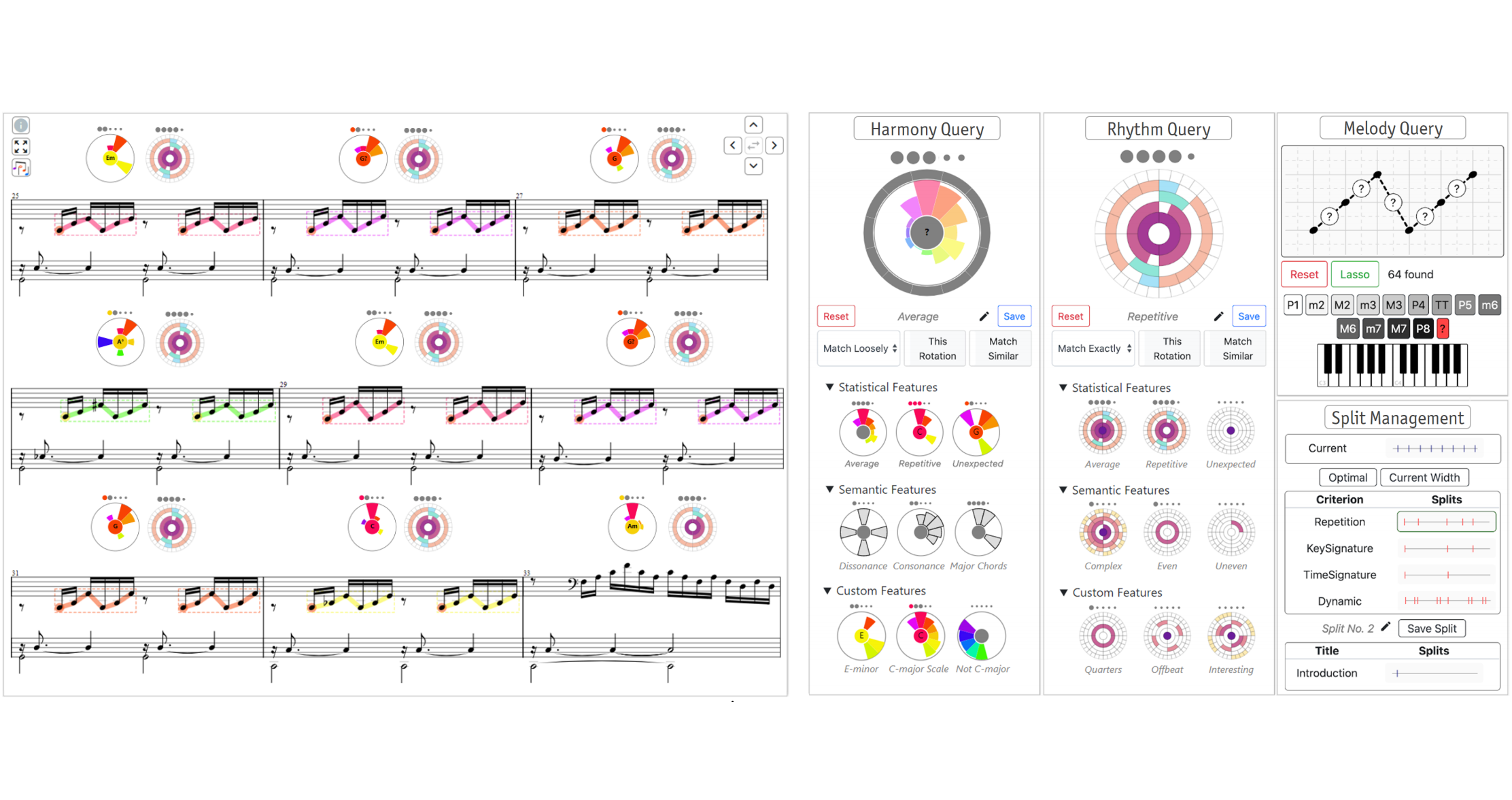
Augmenting Digital Sheet Music through Visual Analytics
Typically, music analysts use common music notation to analyze musical compositions.
Diverse abstract visualization techniques have been published to address different music analysis task.
Often they lack a suitable connection to the standard notation, which makes it difficult for analysts to
combine close and distant reading.
We introduce a visual analytics technique to augment the standard notation with abstract glyph
visualization in a minimally instrusive way to combine close and distant reading for sheet music.
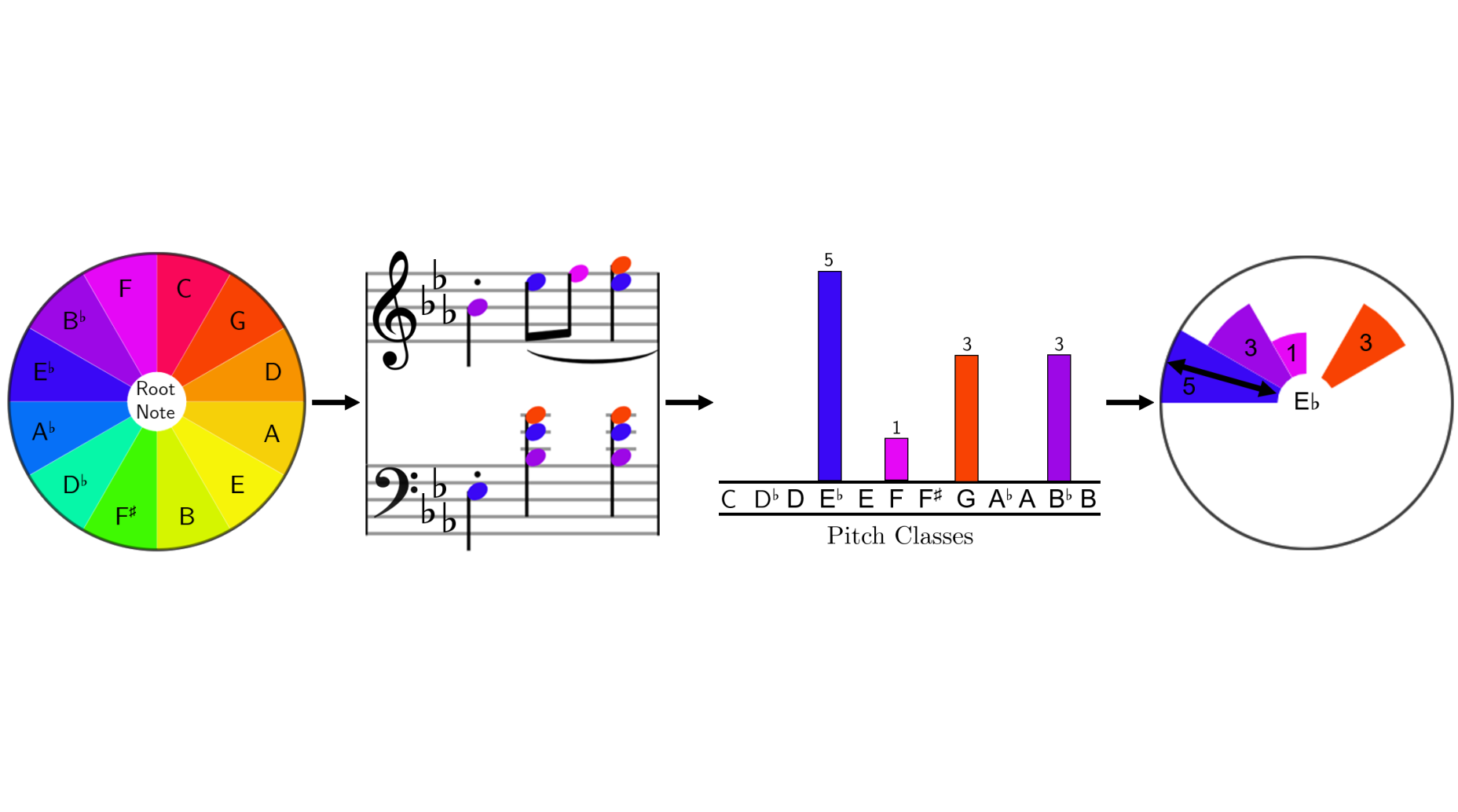
Augmenting Music Sheets with Harmonic Fingerprints
We use visualization and analysis of music data to enhance the harmonic analysis of sheet music. We
investigate, how musicologists can profit from a visualization that is based on the circle-of-fifths
to provide an intuitive understanding for domain experts. The harmonic fingerprint facilitates the
identification of similar harmonies. By conducting a user study, we found that the fingerprint is
invariant to the octave of the notes, since the chromatic scale is repeated at every octave.
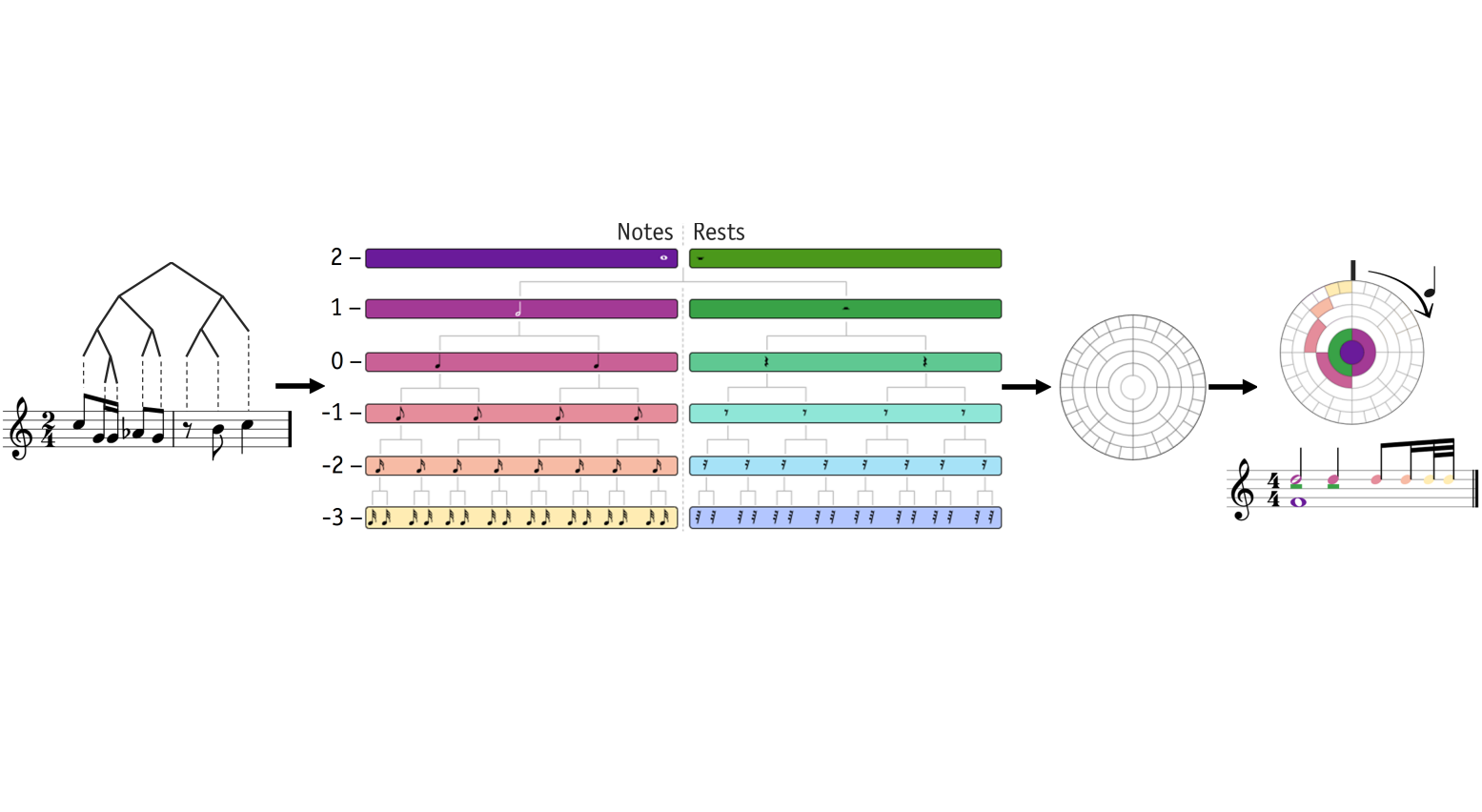
Augmenting Sheet Music with Rhythmic Fingerprints
Visual Analytics empowers musicologists to utilize visualization to enhance the rhythmic analysis of sheet
music.
Manual analysis of rhythm in sheet music is a tedious task, due to the complext visual encoding of the
well-established Common Music Notation.
We introduce rhythmic fingerprints exploiting music theory concepts to facilitate the understanding of
rhythmic information in digital musical scores
by maintaining the connection to the familiar encoding through juxtaposing.
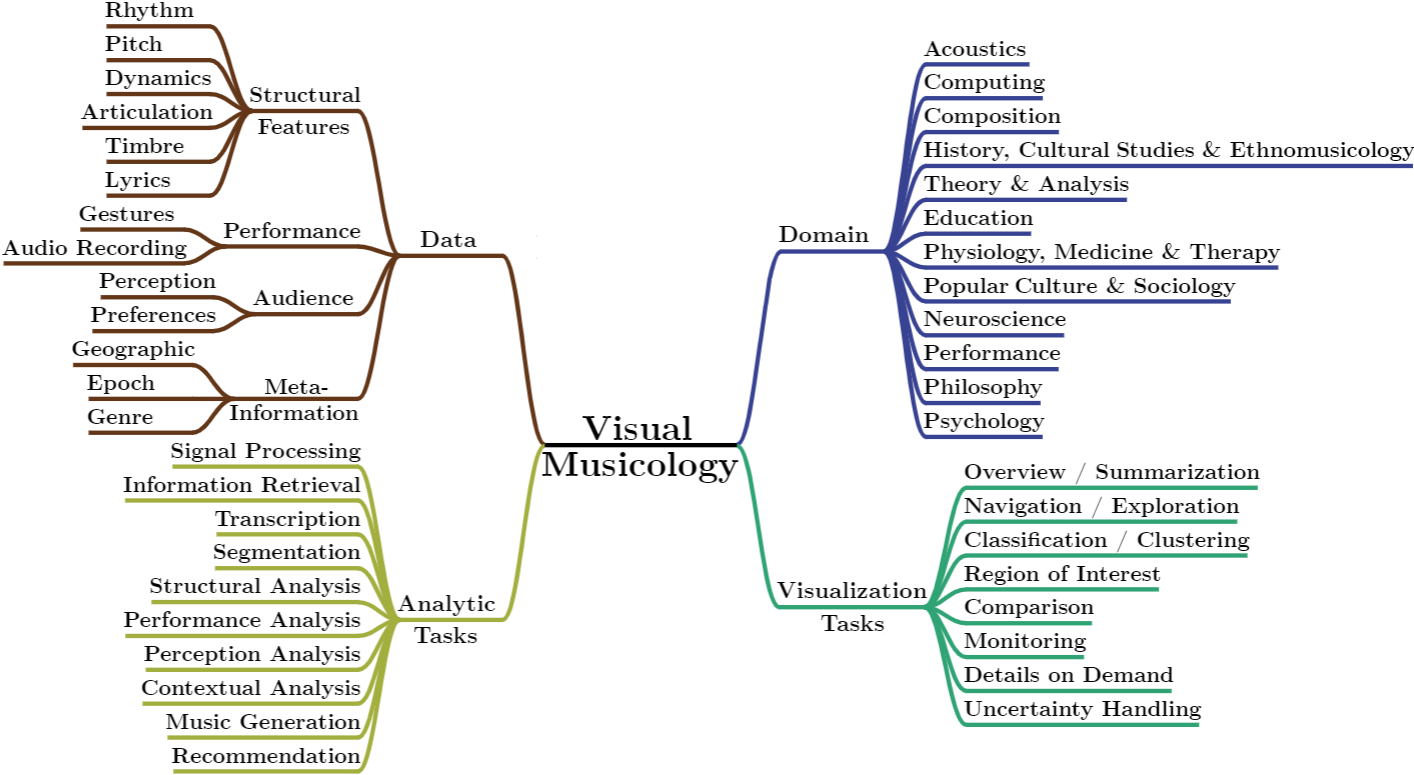
Framing Musicology through Methodology Transfer
We frame the field of Visual Musicology by providing an overview of well-established musicological
sub-domains, corresponding tasks, open challenges, and research opportunities to foster
collaborative, interdisciplinary research. We argue, that through methodology transfer established
methods can be exploited to support musicological research. Finally, we point out open challenges,
discuss research gaps, and highlight future research opportunities.
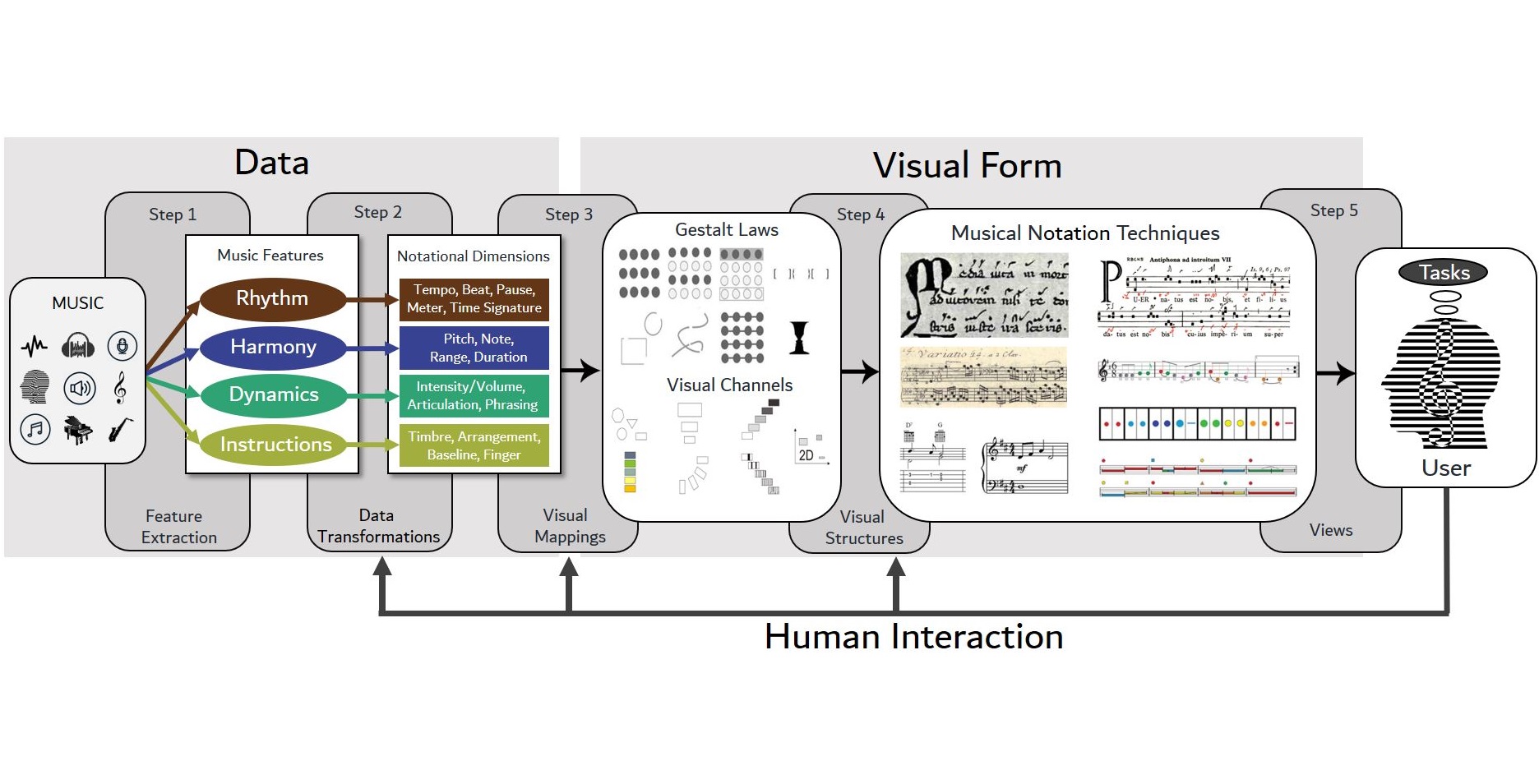
Analyzing Visual Mappings of Traditional and Alternative Music Notation
Combining the domains of information visualization and music studies paves the ground for a more
structured visual analysis of the design space of music notation, enabling the creation of
alternative music notations that are tailored to different users and their tasks. We propose a
design and visualization pipeline for music notation to conceptualize, create, analyze, and evaluate
the effectiveness of novel music notation methods.







